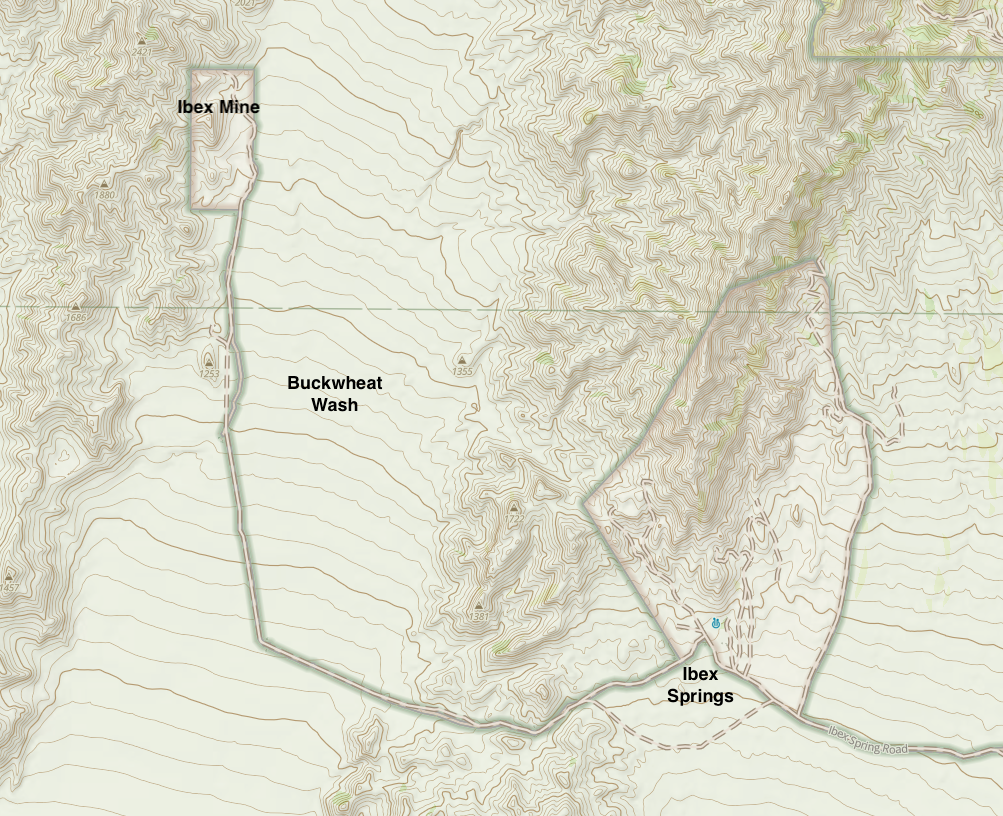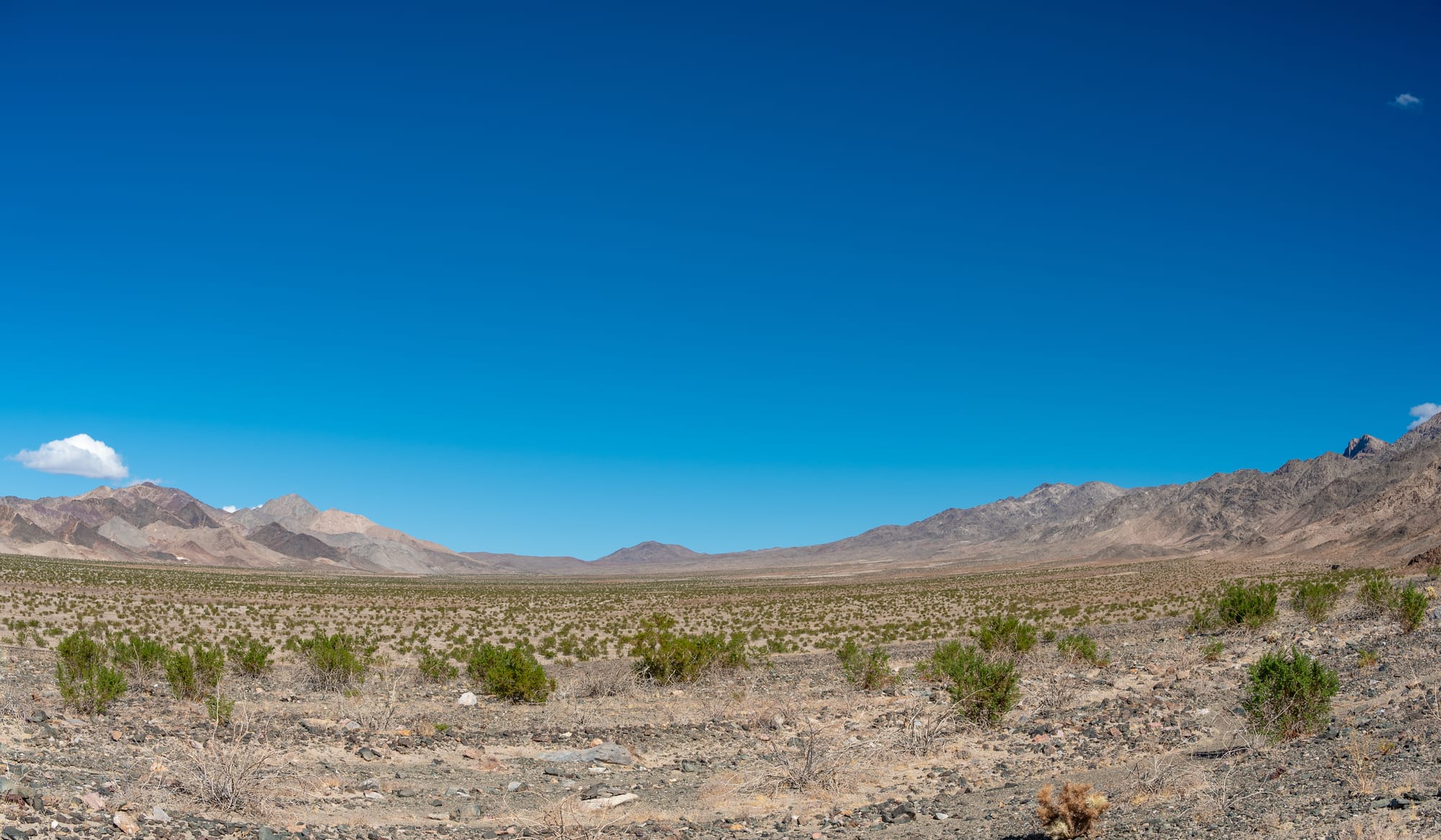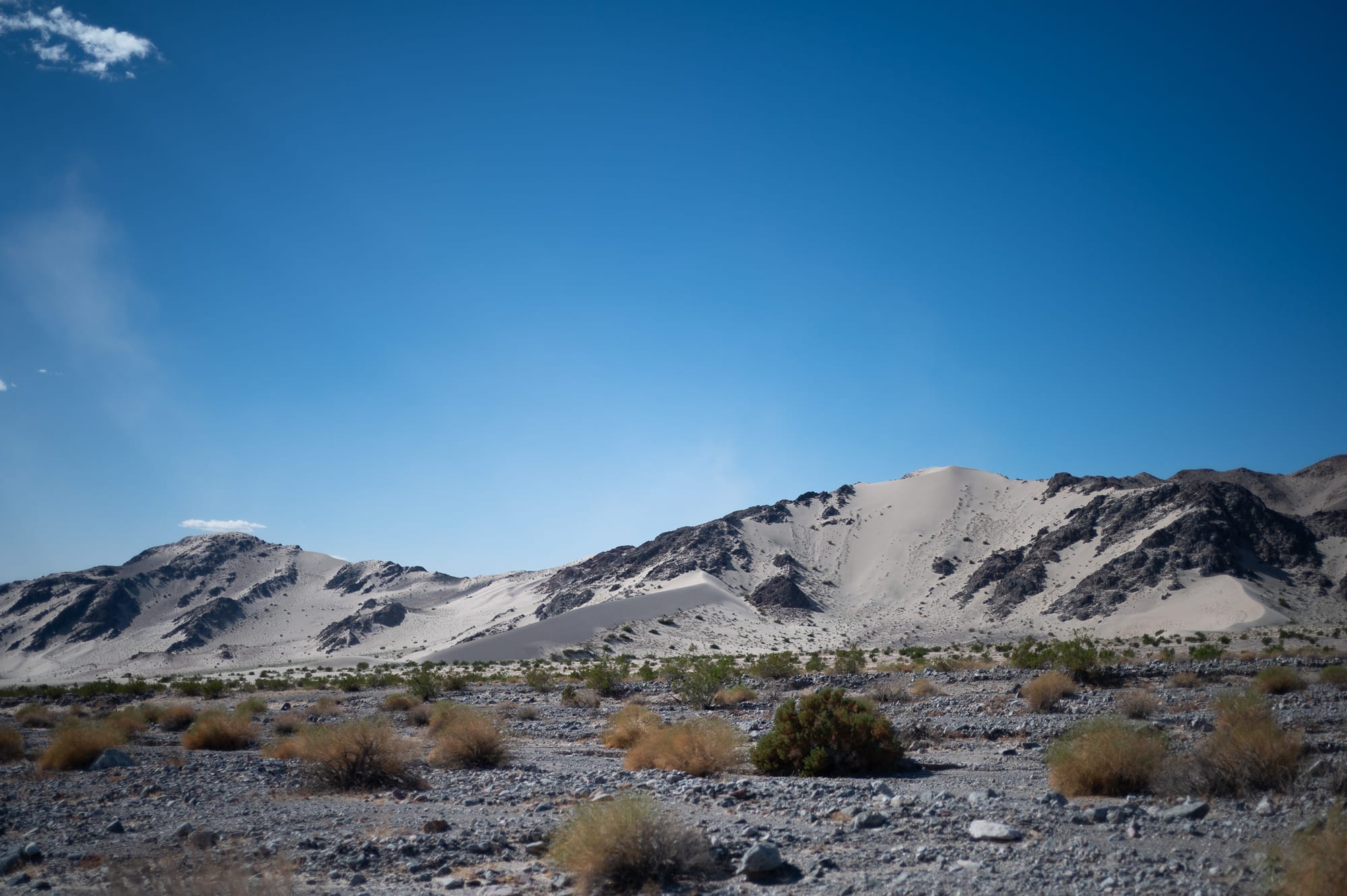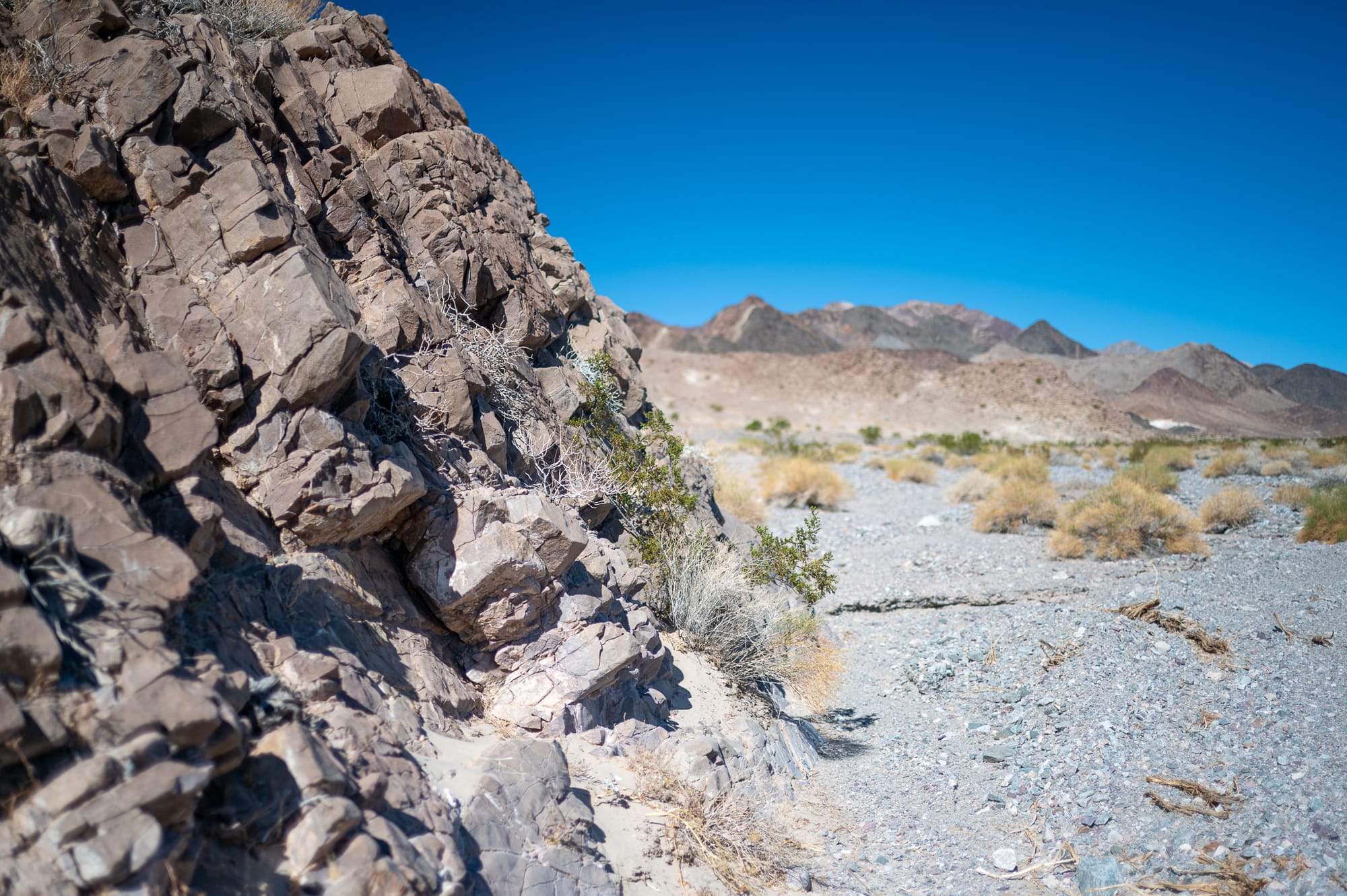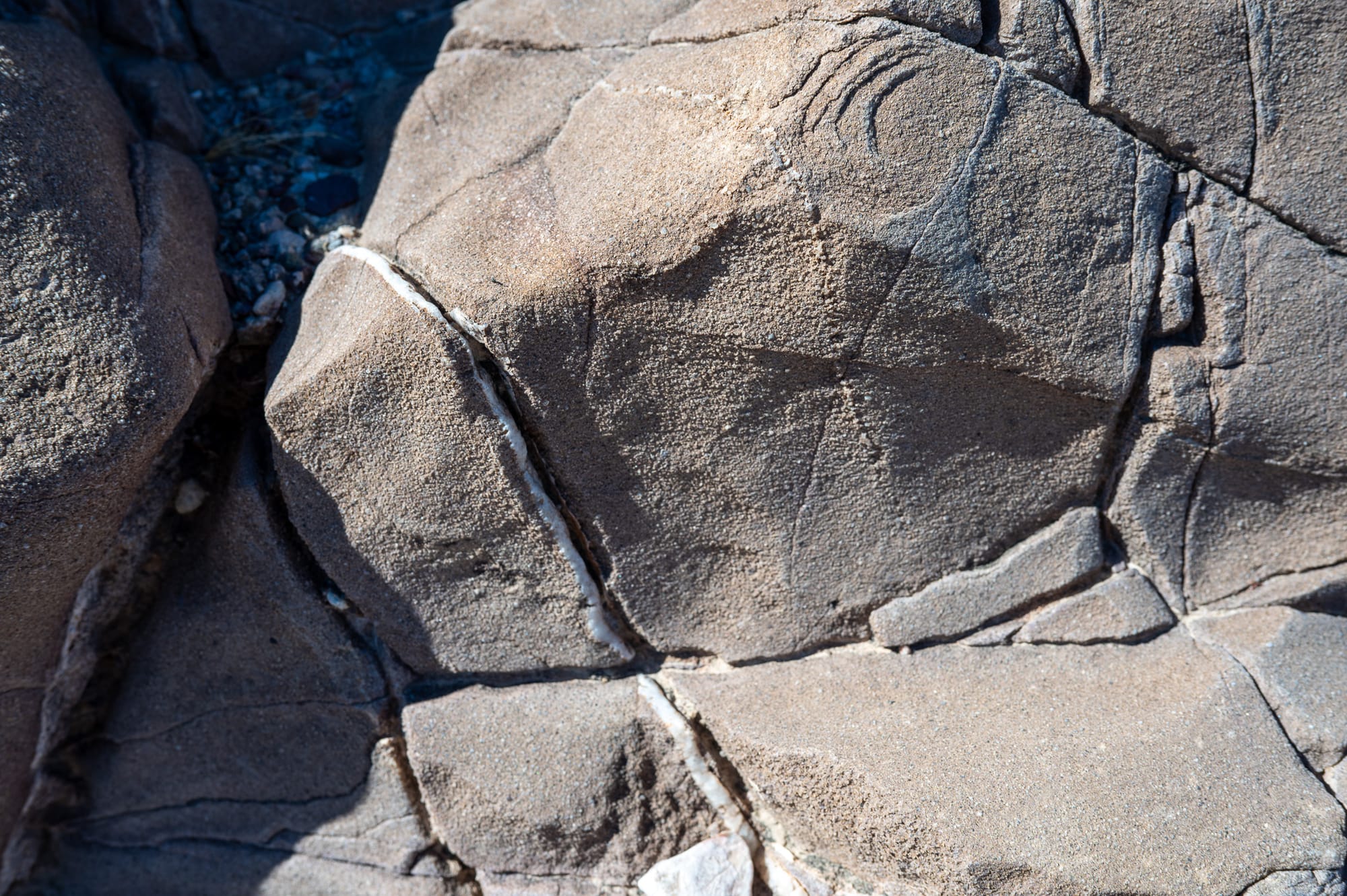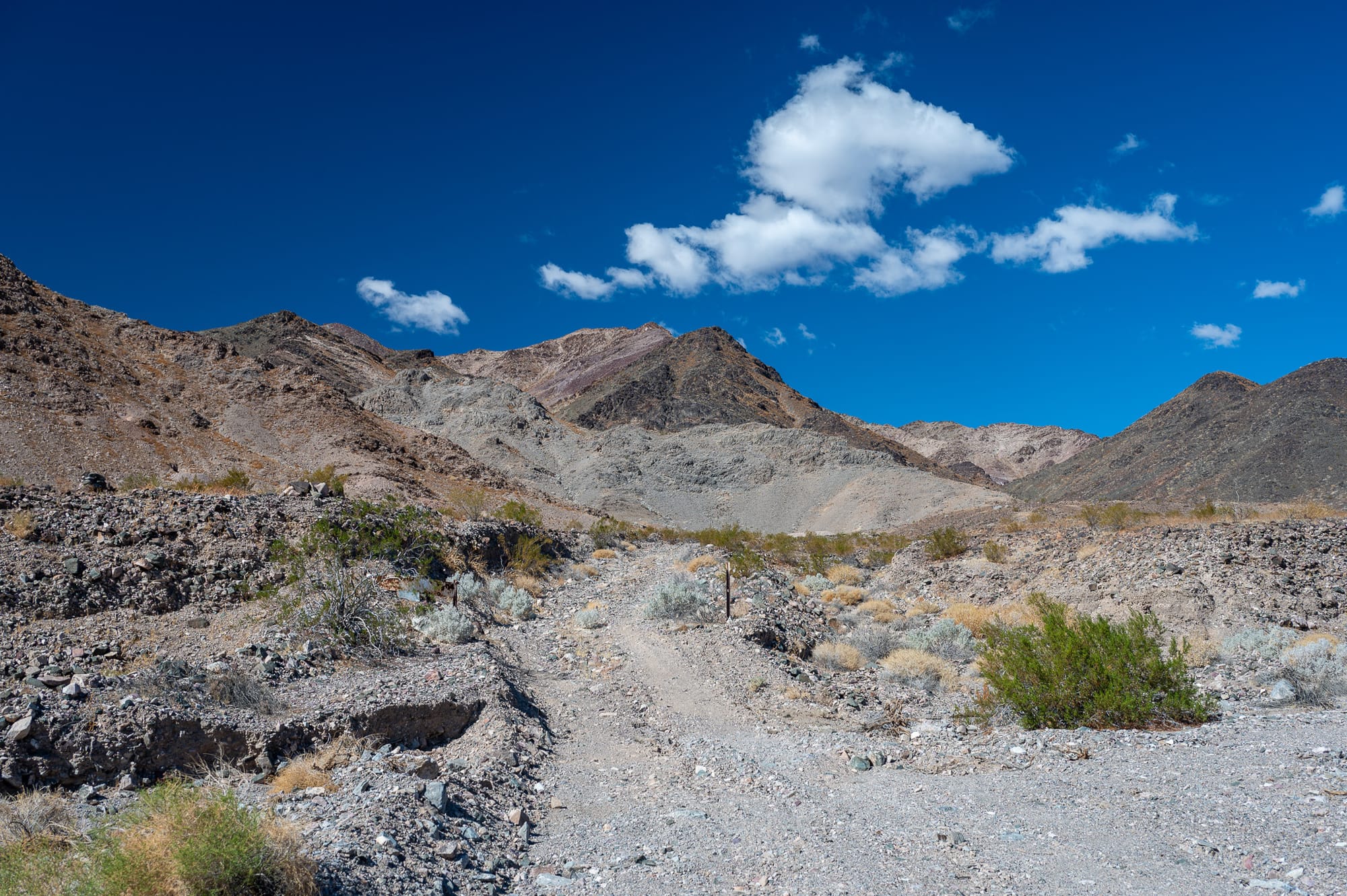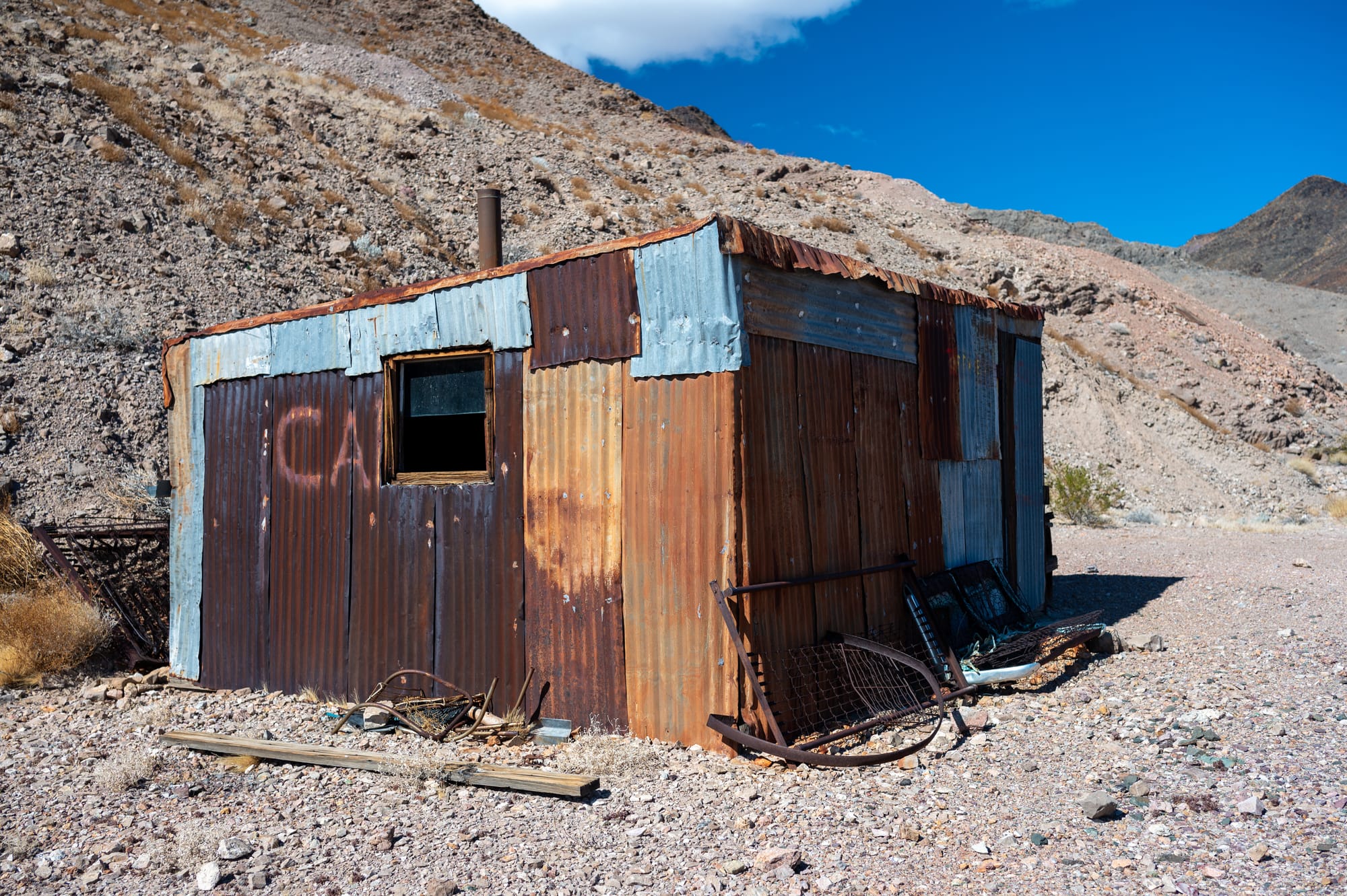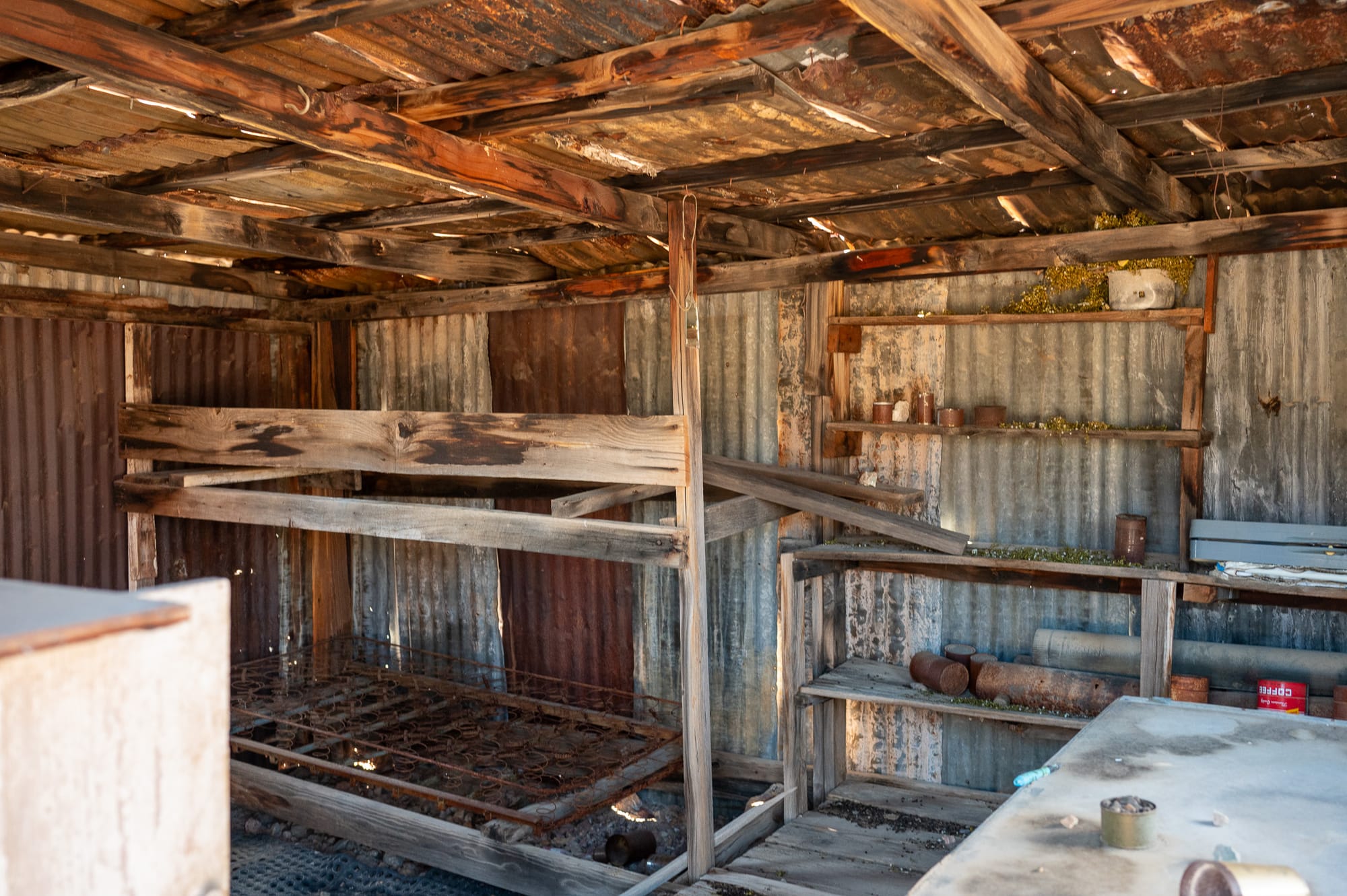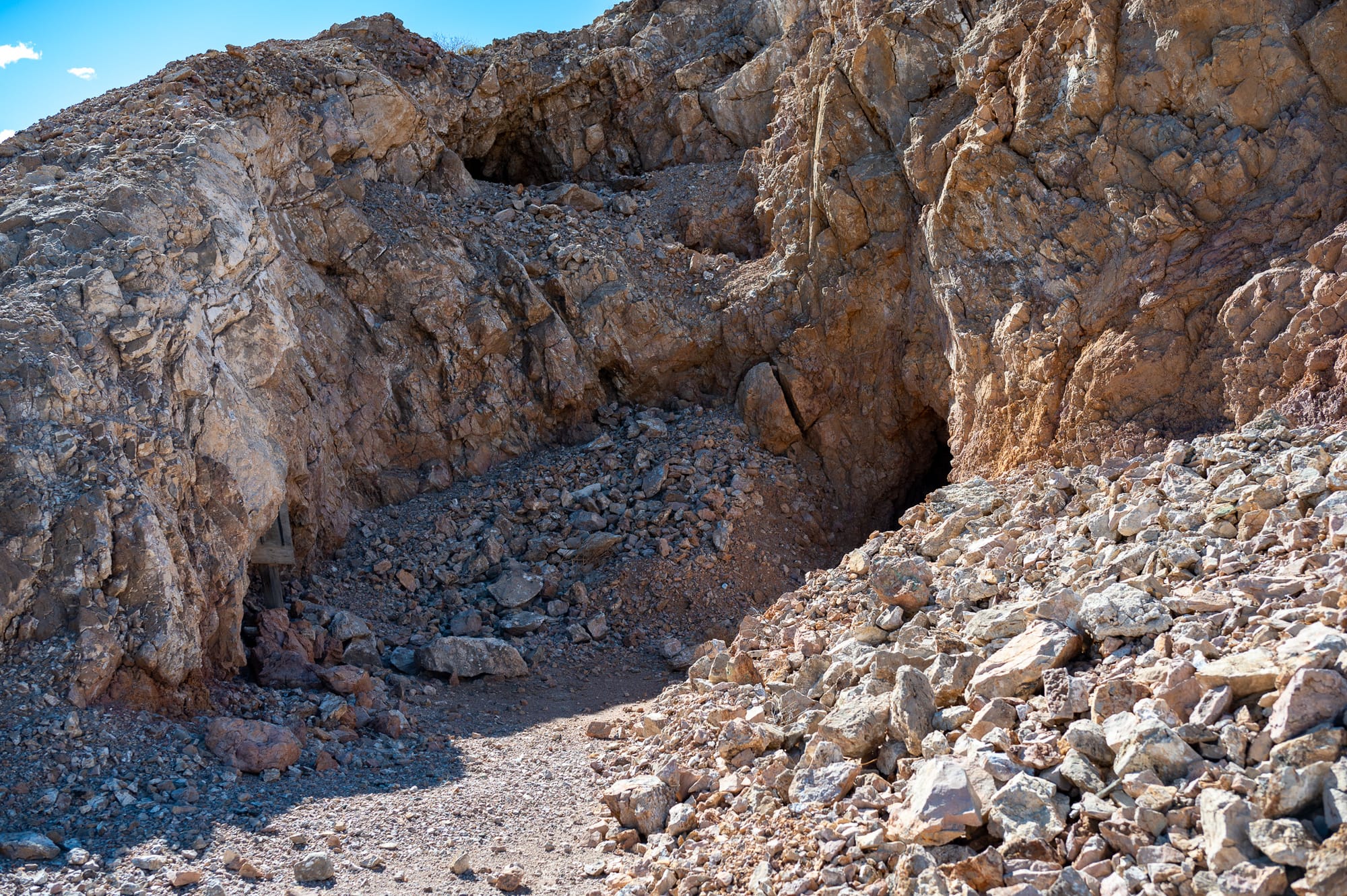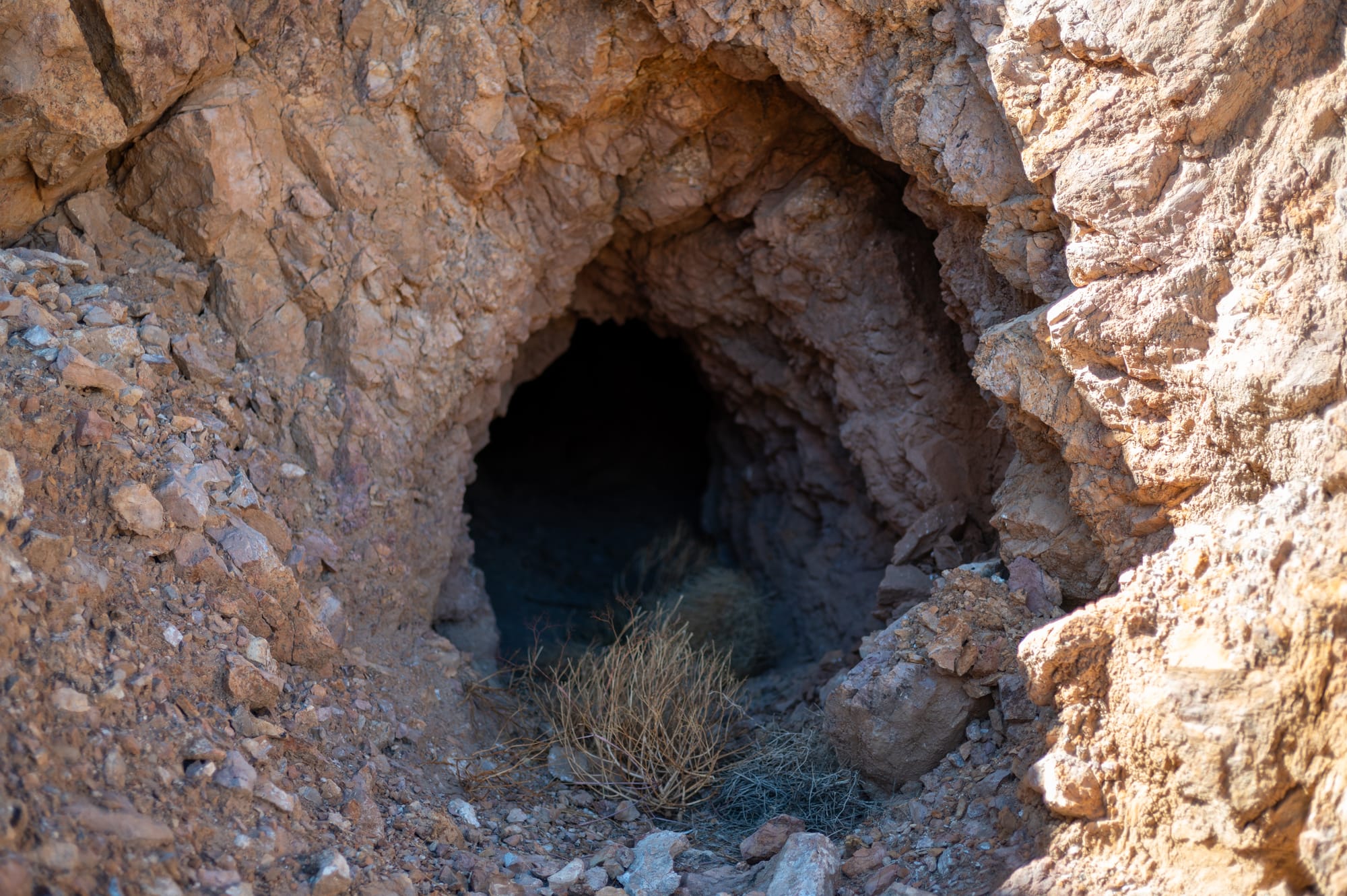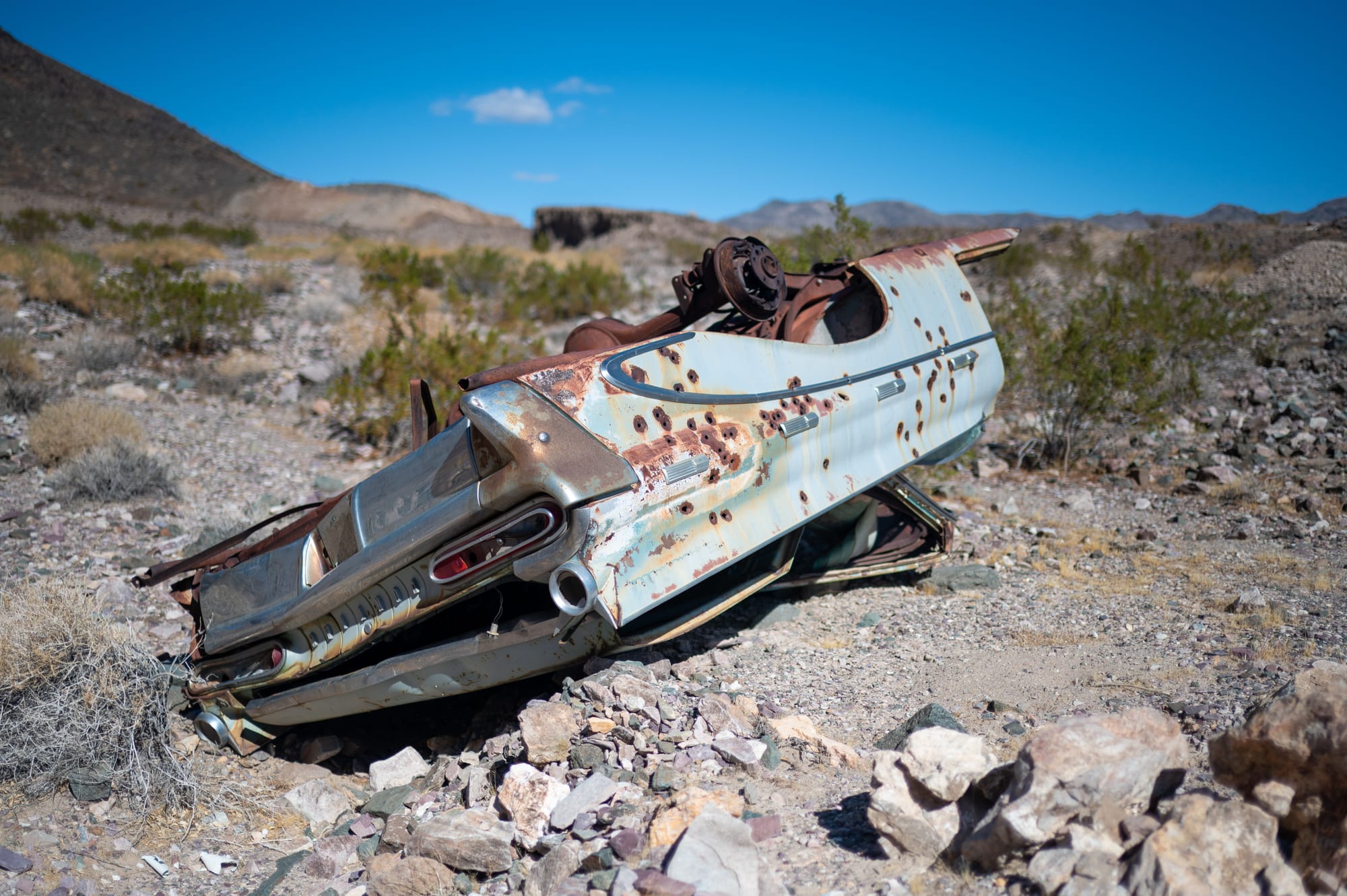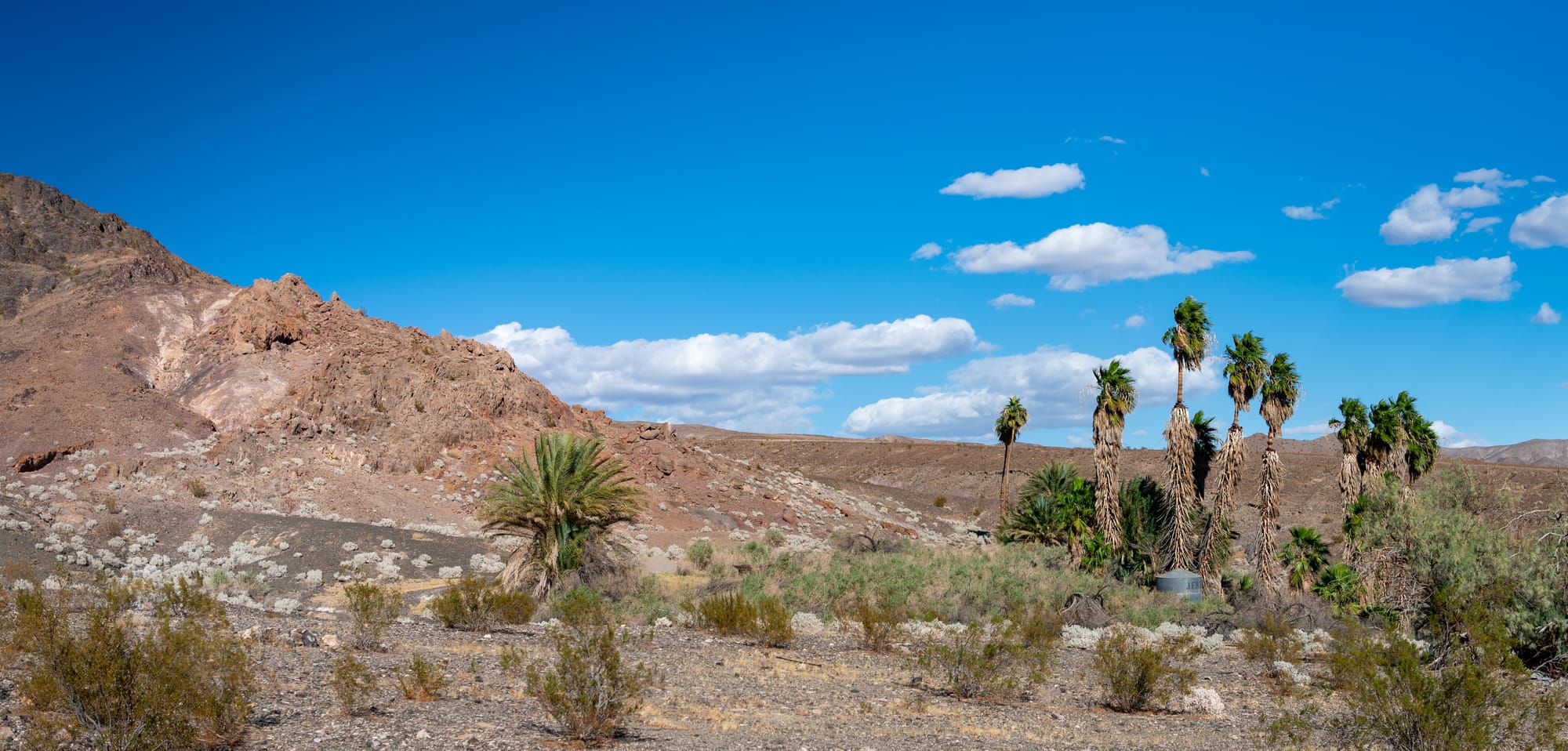Ibex Mine in Death Valley
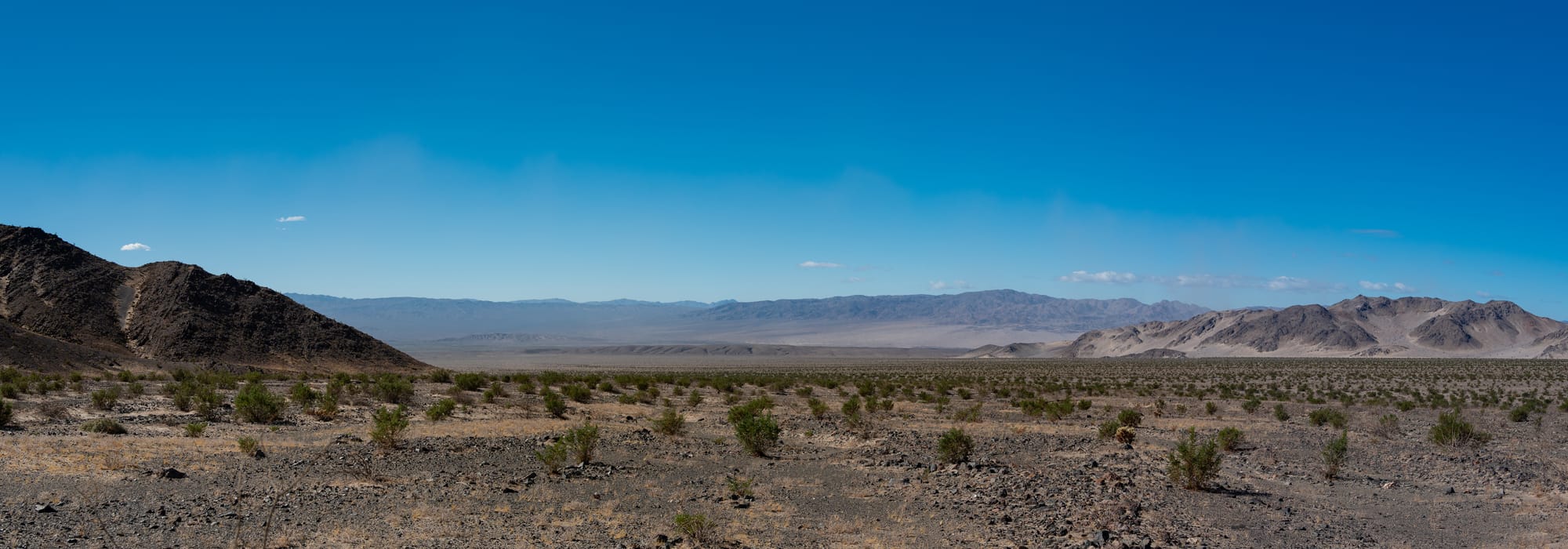
The Ibex Mine is a former Cu-Ag-Zn-Pb mine located in sections 21 & 29, T20N, R5E, SBM in the Black Mountains across Buckwheat Wash from the Ibex Hills. The local geology is Precambrian rocks, undivided, “unit 1 Death Valley”. There were numerous foundations and retaining walls typical of these operations. One reasonably intact cabin remains standing. The mine workings included multiple shafts and adits; however, we found most to be collapsed with the exception of one adit near the old cabin.
It began its operation under the Chicago-based Ibex Mining Company, which was incorporated in December 1882. The exact location of the original mine remains unclear, though it’s believed to be within a mile of the site marked on the 1951 Shoshone quadrangle. Initial efforts were promising, and the company built a five-stamp dry roasting mill in 1883. A few shipments of silver-lead ore followed, though production levels remained limited due to challenges with heat, water shortages, and high freight costs.
By 1889, operational issues, particularly fuel shortages, led to only sporadic activity at the mine, and it sat idle by 1892. For the next 15 years, the district was mostly deserted, except for prospector Frank Barbour, who maintained the Ibex Mine through annual assessment labor.
Interest in the region picked up again in 1906, sparked by the nearby Bullfrog mining boom. A new wave of prospectors moved in, and major claims—such as the Orient and Rusty Pick—were staked nearby. The Busch brothers from Rhyolite acquired several claims, and the Heckey brothers, who operated the Evening Star Mine, moved their families to the site. By the end of 1907, the Orient had ore ready for shipment, though high freight costs ($20 per ton) and the desert’s extreme conditions continued to restrict progress.
Development persisted into early 1908, but by summer, funding issues slowed down the work. By 1909, development remained minimal, with only one shipment of ore from the Rusty Pick Mine. Investors were attracted but failed to deliver significant developments, leaving the mines mostly inactive by the end of the year.
In 1915, the Ibex Mine experienced a brief revival with a workforce of 20 men, operating as a regular shipper. The following year, the mine’s new owners planned to build an aerial tramway, though it never materialized. By 1921, the Ibex Mine shut down permanently.
